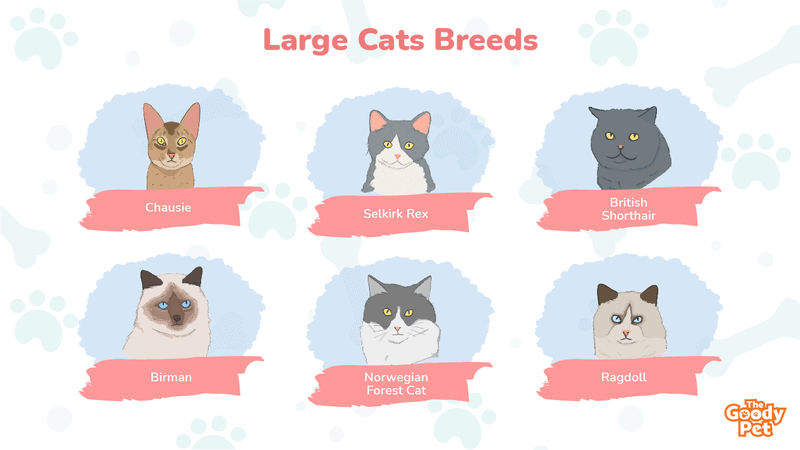When most people think of big cats, they picture lions, tigers, and leopards. However, there are actually a number of domesticated cat breeds that can weigh in at significantly more than the average housecat.
These cats can weigh up to thirty pounds and reach a length of four feet. While they may be a bit too much for the average household, they make excellent pets for those who have plenty of space and love big animals.
If you’re looking for a big kitty, here are 14 of the largest domestic cat breeds. From the gentle giants to the fiercest felines, there’s sure to be a perfect cat for your home!
14. Savannah
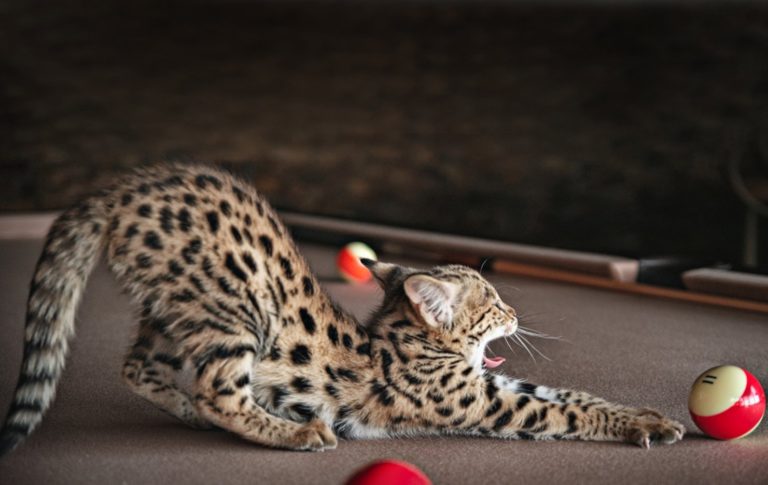
While the Maine Coon is the largest of the purebred domesticated cats, the Savannah takes the top spot on our list as a hybrid between the wild Serval and the domestic Siamese cat. The result is a tall and strong thing of beauty weighing in at up to 20 lbs.
Due to their wild ancestors, these cats require early socialization to get along with their human companions, strangers, and other pets.
13. Maine Coon
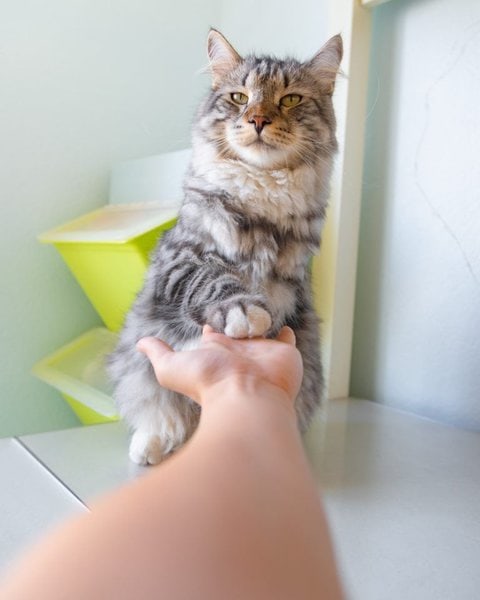
The Main Coon is without a doubt the largest of the purebred, domestic cat breeds. They can grow up to 18 lbs in weight and 16 inches in height which is literally the size of most small dog breeds.
Their size is not the only thing that makes them similar to dogs. They are actually very intelligent and friendly and have been compared to their canine alternatives as fantastic companion pets.
12. American Bobtail
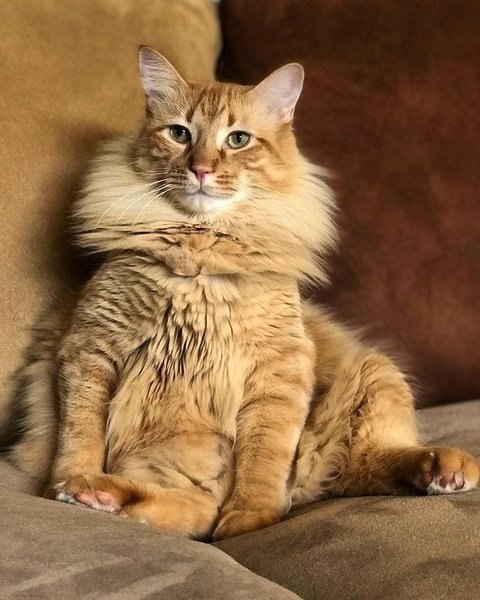
The American Bobtail cat gets its name from its unique genetic mutation. This causes the not-so-little kitties to be born with naturally bobbed tails that are about ⅓ or less the size of a normal cat’s tail.
These cats are quite large and can grow up to 16 lbs heavy. They are known for their proportional build with thick coats that add to the large cat aesthetic that makes them so popular.
11. Pixiebob
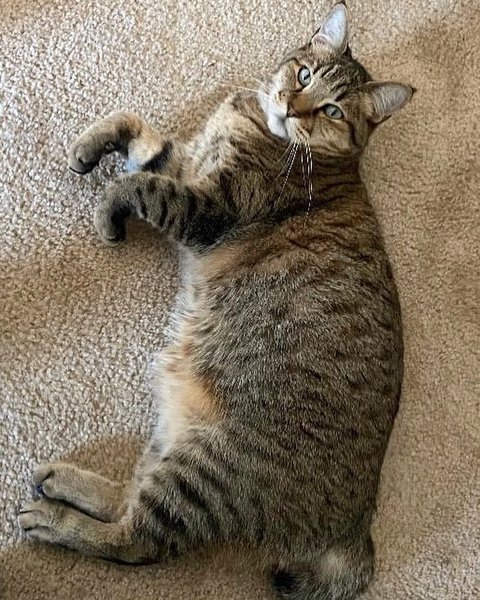
With an average weight of 11 lbs and a wild appearance, it is easy to confuse the Pixiebob for a dangerous, wild cat breed. However, these domesticated furballs are actually very sweet and friendly. In fact, with early socialization, these cats tend to be very friendly and affectionate even with strangers.
As their name suggests, they tend to have very short tails. However, some Pixiebob varieties have no tails at all while others have long ones.
10. Siberian Cat
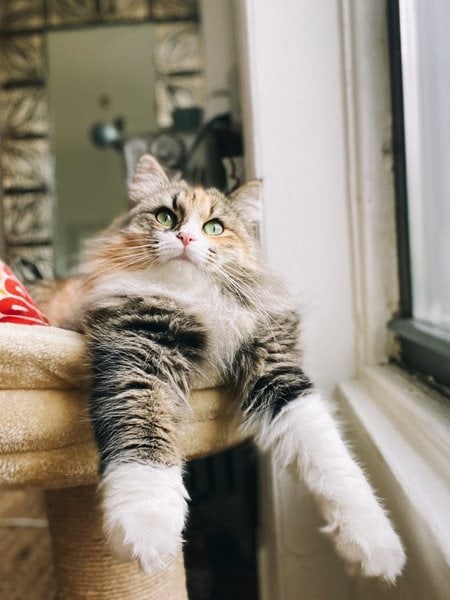
The Siberian cat looks a lot like the Norwegian Forest Cat which we shall take a look at shortly. However, despite the similarities, the Siberian tends to be smaller in terms of size averages. They are also a lot more social with other pets and with humans.
These cats are known for their thick, long coats. However, they are as hypoallergenic as you can get with cats which comes as a surprise to many.
9. Selkirk Rex
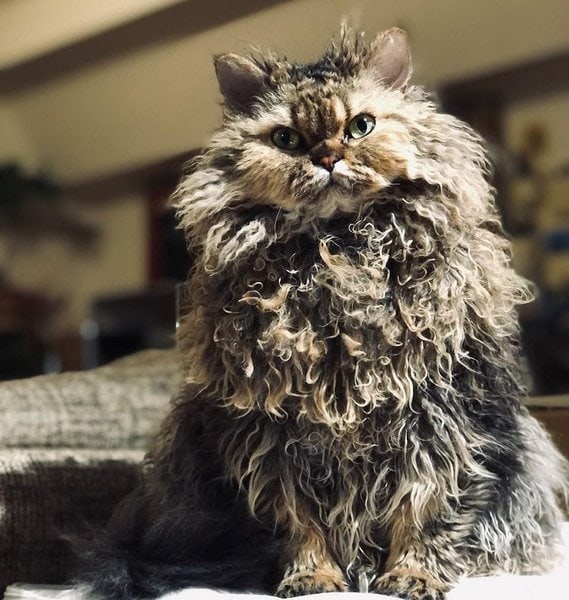
Strictly speaking, this is not an outrageously large cat breed when compared to other breeds on our list. In fact, it has quite a compact build. However, they are very muscular and heavy-boned, which makes them among the heaviest and strongest cats out there.
They are probably best known for their curly fur, which requires a lot of maintenance in terms of combing, de-shedding, and detangling to avoid the formation of mats.
8. Chausie
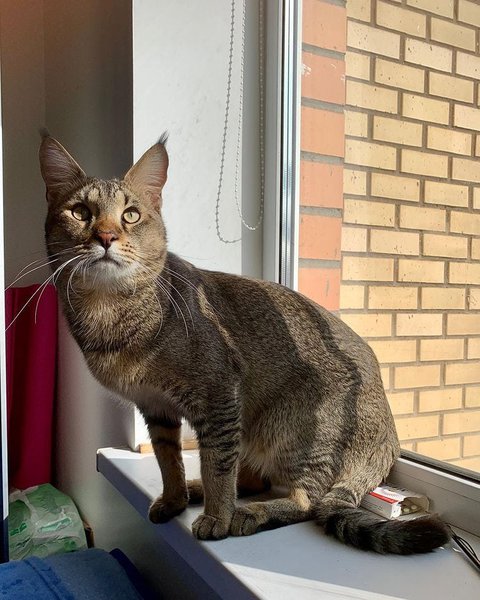
The Chausie is one of the most clingy and affectionate cat breeds out there despite its wild origins. Unlike most cats that are quite independent, this loveable breed craves human company and will not enjoy being left alone for too long.
These cats fall within the medium-to-large size category with an adult weight range between males and females of 8 to 16 lbs. Regardless of their large size, they are very agile and love nothing more than playing and exploring.
7. Persian Cat
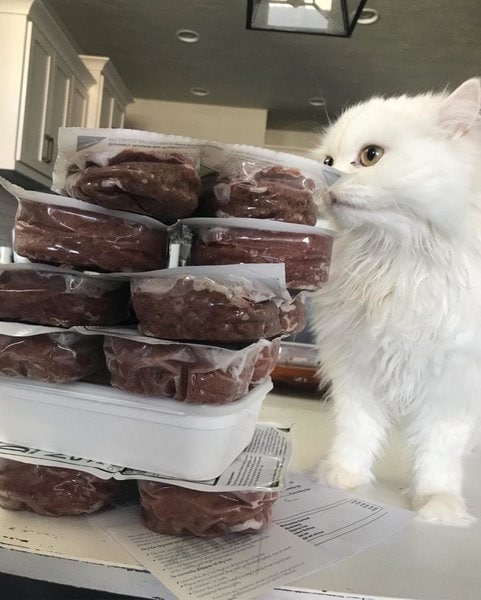
The Persian cat is one of the most popular exotic, pedigree cat breeds in North America. While it has earned its spot on our list of large cat breeds, it is important to understand that there are different varieties of this cat in terms of size.
In fact, it is one of the few giant kitty breeds that have toy and teacup varieties. The little furballs are every bit as beautiful and endearing as their larger counterparts.
6. Ragdoll
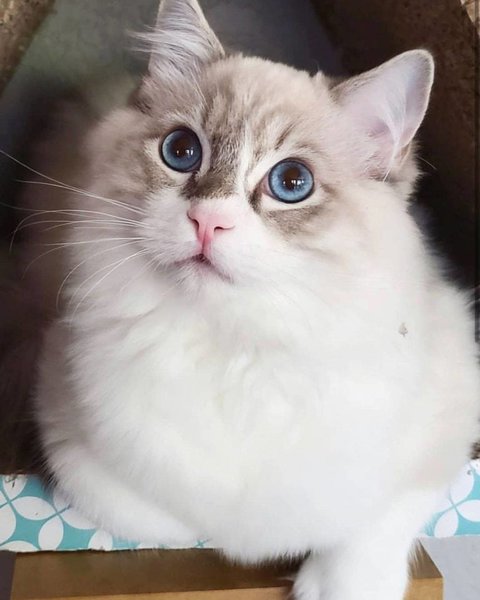
These cats are actually referred to as “puppy-like” cats. This is due to their dog-like behavior, including their higher levels of affection towards humans and their comfort with physical contact when compared with other cat breeds.
They actually get their name from the fact that they go limp when carried by their human companions. Their heavyweight is exaggerated by this response, but with the cuddles you get to enjoy, it is definitely worth it.
5. Ragamuffin
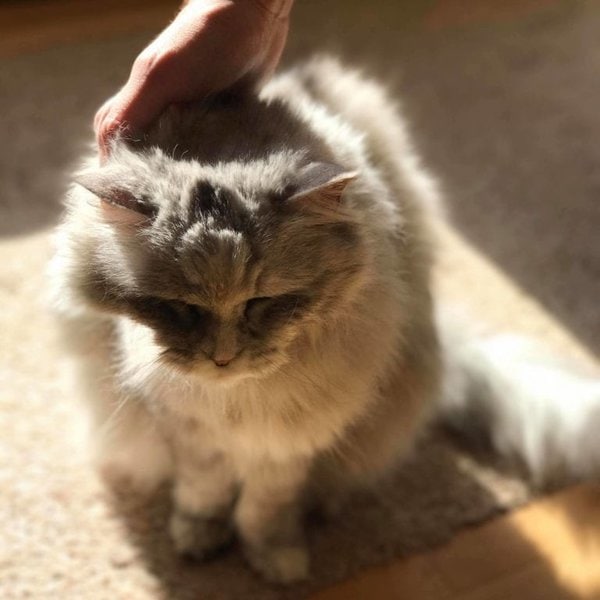
Ok, this actually sounds like a made-up name, but it actually isn’t. However, if there was ever a cat deserving of this endearing name, it would be the equally endearing ragamuffin.
It is actually a mixed pooch developed by breeding Ragdolls with other large, long-haired breeds, primarily the Turkish Angoran or Persians.
They are just as social and friendly as their Ragdoll relatives and are thus quite popular. They are also known to get along very well with other pets.
4. Birman
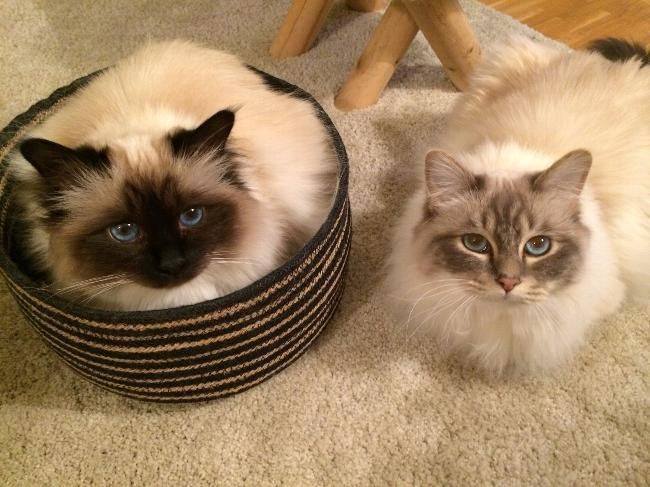
This is another big, loveable, furball that breaks the aloof cat stereotype with its affectionate and needy personality. In fact, they are among the few cat breeds out there that do not do well with being left alone and instead thrive from constant companionship.
Aesthetically, they stand out with their silky white coats, and darker colored paws, ears, and faces. They also have a very large build, exaggerated further by their dense coats.
3. Norwegian Forest Cat
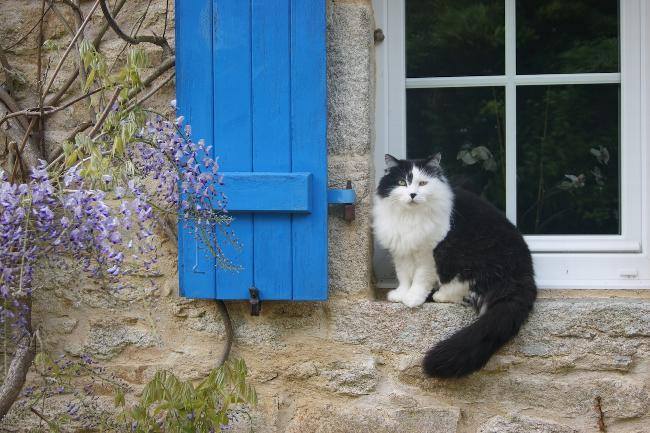
The Norwegian Forest cat has a really beautiful coat that is particularly thick around the neck giving the kitty its signature look. It is really sad to even imagine that the breed almost went extinct during and after World War II. However, they were successfully repopulated and are thriving today as some of the most popular large cats around the world.
These high-energy cats require a lot of attention and playtime if kept as full-time indoor cats.
2. Bengal
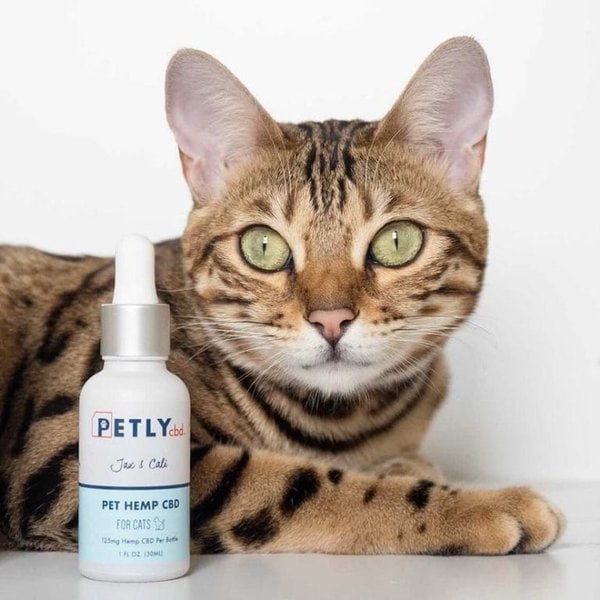
Unlike most of the cat breeds that we highlighted on this list, the Bengal cat is here due to its tall and lean frame and not so much due to its weight. It is definitely larger, more muscular, and more athletic than your everyday domestic cat.
They are very energetic cats that love to play with their humans as well as go on a solo exploration both indoors and outdoors. They are also very confident in nature.
1. British Shorthair
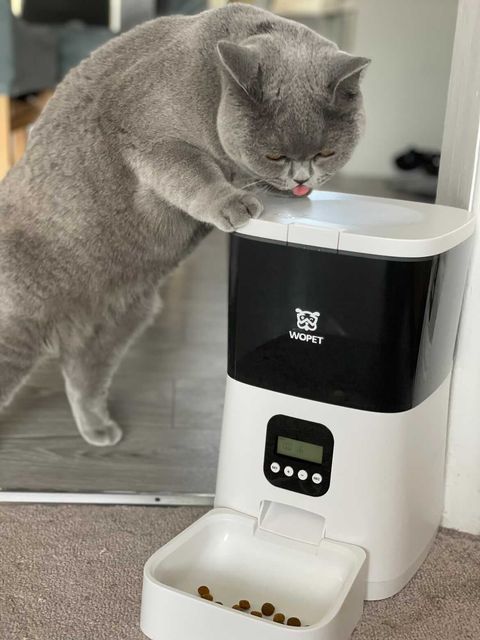
The British Shorthair cat has a very distinctive appearance with its stocky build, thick and bluish coat, as well as its serious expression. These large kitties can grow up to 17 lbs, but most average 9 to 13 lbs.
These cats are generally very laid back and are known for being quite lazy when allowed to have their way. They are also very affectionate towards their human companions, who take the time to bond with them.
Related Questions
What Is The Strongest Domestic Cat?
The Egyptian Mau is the strongest and fastest domestic cat. Although it is a medium-sized cat, it has a very muscular build and an athletic predisposition. These kitties are generally very shy, but once they learn to trust their humans, they are known for being very goofy, friendly, and loveable.
What Is The Most Dangerous Cat Breed?
The black-footed cat is considered the most dangerous cat breed based on prey kill rate. The little cats may resemble their domesticated relatives, but they are naturally wild. When domesticated, early socialization is critical. Even then, they will be a little more reserved and definitely more comfortable outdoors.
Do Cats Guard Their Owners?
Contrary to popular beliefs, cats can actually be very protective of their owners. They are likely to stand up against other pets including dogs and other cats. However, they tend to be very scared of humans and may not offer any form of protection to their human companions here.

